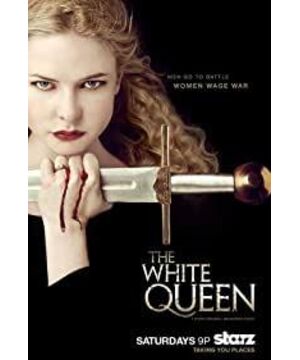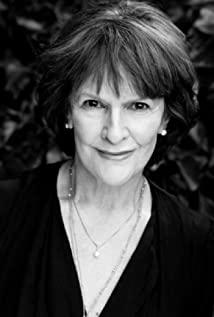Author Philippa Gregory has a doctorate in 18th century literature studies at Edinburgh University, and aired after The White Queen, she also led the production of a documentary about this history of The White Queen and the true story of opponents who have seen this documentary will know the author Creation is more faithful to history. All the major events in the play are in harmony with the faith and history, and there is almost no contradiction. The author also used some wild history to enrich the flesh and blood. For example, during the encounter between Edward IV and Elizabeth, according to historians, Elizabeth didn't follow each other at the beginning, and even took out a dagger to force it. And they met under a big willow tree is the legend of the time, which has been restored in the play.
As for the biggest bug witchcraft, the author handled this way for two reasons.
First, Elizabeth's mother, Jacquette, is the daughter of the Earl of Luxembourg. In European folklore, especially the legend of the Low Countries, the water monster Melusine was the wife of the first Earl of Luxembourg, Siegfried. (The following is a section of "Melusine" in Wikipedia, to the effect that the Luxembourg family claimed to have the blood of Melusine. And Melusine turned into Luxembourg Castle the day after her wedding after her wedding with Siegfried. She asked for one day a week to be alone. But the curious earl peeped at her and found that she had become a mermaid in the bathtub. Then the earl cried in fright. Melusine saw this and took the waves in the bathtub and walked away.)
The Luxembourg family also claimed descent from Melusine through their ancestor Siegfried. When in 963 AD Count Siegfried of the Ardennes (Sigefroi in French; Sigfrid in Luxembourgish) bought the feudal rights to the territory on which he founded his capital city of Luxembourg, his name became connected with the local version of Melusine. This Melusina had essentially the same magic gifts as the ancestress of the Lusignans, magically making the Castle of Luxembourg on the Bock rock (the historical center point of Luxembourg City) appear the morning after their wedding. On her terms of marriage, she too required one day of absolute privacy each week. Alas, Sigfrid, as the Luxem-bourgish call him, "could not resist temptation, and on one of the forbidden days he spied on her in her bath and discovered her to be a mermaid.When he let out a surprised cry, Melusina caught sight of him, and her bath immediately sank into the solid rock, carrying her with it. Melusina surfaces briefly every seven years as a beautiful woman or as a serpent, holding a small golden key in her mouth. Whoever takes the key from her will set her free and may claim her as his bride." In 1997 Luxembourg issued a postage stamp commemorating her.
In the War of the Roses series, Jacquet's setting is a descendant of Melusine, so he has some witchcraft, and the ability of witchcraft is also passed on to the White Queen and White Princess along with Jacquet's bloodline. In the first episode of "The White Queen", Jacqueta told the White Queen that they have Melusine blood. In "The White Princess", the White Queen repeatedly told the White Princess that they were descendants of Melusine, and also said Now Melusine sings to me before they died (the sixth episode is 43 minutes and 26 seconds, the picture above always fails). The curse that Queen White and Princess White put together—cursing the one who killed her eldest son whose eldest son died and finally had no future—this curse was directed at Hexia, and the mother of the river they called was Melusine. (Of course, this curse is in line with Henry VII’s descendants, and Elizabeth, married to Henry VII, cursed her own descendants, which is very dramatic.)
Second, it was also very dramatic that the queen mother and daughter were able to witchcraft. the opinion of. Because Elizabeth became Queen Edward IV as a commoner widow dragging an oil bottle. This was incredible to many people at the time. There was no marriage because of love or lust. The marriages were all business, especially the king's. Marriage should be more of a business. Therefore, in people's minds at that time, the queen mother and daughter witchcraft was the only reasonable explanation. Warwick sued the queen’s mother for using witchcraft to facilitate the marriage of Edward IV and Elizabeth, as well as the material evidence that two villains were entangled together, which are all historically recorded.
The major events and historical records in the entire plot of "The White Queen" are completely consistent. If you understand these historical records, you will find that the author's interpretation is still very original.
In Philippa Gregory's War of the Roses series, "Fortune's wheel" ("Wheel of Destiny") is a word that runs through the front and back. In "Daughter of the River", Joan tells Jacquette that "Fortune's wheel will never stop turning", Both Margaret and Jacqueta of Anjou have said this in the play. The history of the War of the Roses gives people the greatest feeling that world affairs and destiny are impermanent. The political power rises and falls suddenly. After defeat, it may miraculously come back to life, and when it is brilliant, it will also collapse unexpectedly. Yesterday’s enemies can lay down their blood and feud and shake hands because of common interests, and friends of the past can also draw swords to each other because of conflicts of interest. For a while, he is still on the throne, and for a while, he will become a prisoner, and maybe he will survive again. This is
the plot of "Fortune's wheel will never stop turning" witchcraft and prophecy adds to this profound sense of fate. The White Queen predicted that a woman in red had her blood on her hands. (Margaret kills the prince in the tower), but Margaret's situation at the time seems to be that she can't stand up forever. Margaret of Anjou was deadly enemies with Kingmaker Warwick and George. The latter two threw her husband from the throne and forced her into exile. She once cut off the head of George’s father, the Duke of York, and hung it in front of the castle. Opposing Edward IV, they were allied again, and Warwick also married her sons and daughters.
The plot of witchcraft and prophecy also caused the most dramatic scene in the whole play. The White Queen and the White Princess asked Melusine for revenge, so that the eldest son of the White Queen’s eldest son Edward V died for generations, but the fate of the White Princess was unexpected. She had to marry the enemy, and her eldest son died under the curse of herself and her mother.
Although the plot of witchcraft and prophecy is absurd, it undoubtedly enhances the dramatic fateful atmosphere of the whole play, and it is endorsed by people's opinions and historical legends at the time, which is actually a very brilliant element.
View more about The White Queen reviews











